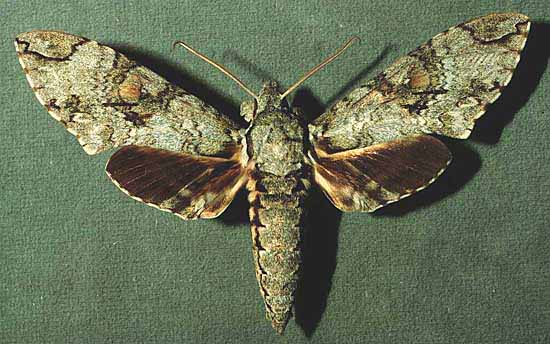
Manduca florestan male courtesy of Dan Janzen.
This site has been created by Bill Oehlke.
Comments, suggestions and/or additional information are welcomed by Bill.
TAXONOMY:
Family: Sphingidae, Latreille, 1802 |
|
|
Updated as per http://biological-diversity.info/sphingidae.htm (Belize), November 2007 Updated as per Fauna Entomologica De Nicarauga, November 2007 Updated as per The Known Sphingidae of Costa Rica, November 2007 Updated as per personal communciation with Anres Oscar Contreras (Pilar, Neembucu, Paraguay), May 2009 Updated as per personal communication with Ezequiel Bustos (Osununu Private Reserve, Misiones, Argentina, October 14, 2009); November 2009 Updated as per personal communication with Evan Rand (Gila and Navajo Cos., Arizona); May 2010 Updated as per Bold Systems (Mexico, Guatemala, El Salvador, Costa Rica, Panama, Venezuela, French Guiana, Suriname, Ecuador, Peru, Bolivia, Paraguay, Brazil, Argentina); February 2011 Updated as per French Guiana Sphingidae; March 8, 2011 Updated as per personal communication with Andres Urbas, (Camp Caiman, near Kaw, French Guiana, April 29, 2011); May 21, 2011 Updated as per personal communication with Brian Fletcher (Urraca Lodge, Jorupe Reserve, Loja, Ecuador, January 30, 2014, 500m); March 12, 2014 Updated as per personal communication with Brian Fletcher (Umbrellabird Lodge, Jocotoco Foundation Buenaventura Reserve, nr. Pinas, El Oro, Ecuador, February 28, 2014, 1200m); March 12, 2014 Updated as per "A Hawk Moths fauna of southern Maranhão state, Brazil, ... "; NEVA: Jahrgang 34 Heft 3 November 2013; via Jean Haxaire; April 5, 2014 Updated as per personal communication with Sergio D. Ríos Díaz in CATÁLOGO DE LOS SPHINGIDAE (INSECTA: LEPIDOPTERA) DEPOSITADOS EN EL MUSEO NACIONAL DE HISTORIA NATURAL DEL PARAGUAY; sent to me in July 2014 by Sergio D. Ríos Díaz. Updated as per personal communication with Bedros Orchanian (Cozumel, Quintana Roo, Mexico); January 27, 2015 Updated as per personal communication with Tony James (116mm, Radisson, Panama, Panama, April 20, 2015); May 6 2015 Updated as per personal communication with Ezequiel Bustos (Shilap revta. lepid. 43 (172) diciembre, 2015, 615-631 eISSN 2340-4078 ISSN 0300-5267), January 4, 2016 Updated as per personal communication with Gernot Kunz (El Copan, Cartago, Costa Rica, March 6, 2019, 1047m); April 26, 2019 |

This site has been created by Bill Oehlke.
Comments, suggestions and/or additional information are welcomed by Bill.
TAXONOMY:
Family: Sphingidae, Latreille, 1802 |
Daniel Rojas Lanus sent me an image from Iguazu, Misiones Province, Argentina. The specimen was taken January 17, 1997.
Andres Oscar Contreras sent me an image from Pilar, Neembucu, Paraguay.
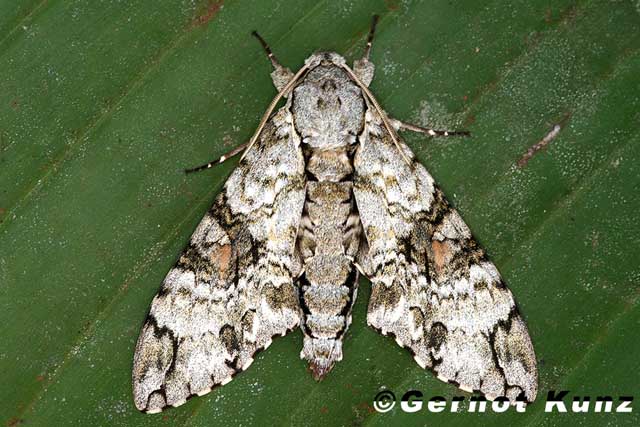
Manduca florestan, Boca Tapada, Alejuela, Costa Rica,
June 5, 2008, 957m, courtesy of Gernot Kunz.
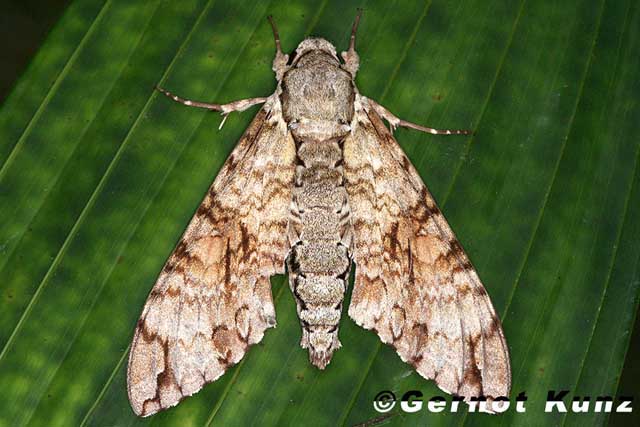
Manduca florestan, NP Piedras Blancas, Puntarenas, Costa Rica,
July 2, 2008, 65m, courtesy of Gernot Kunz.
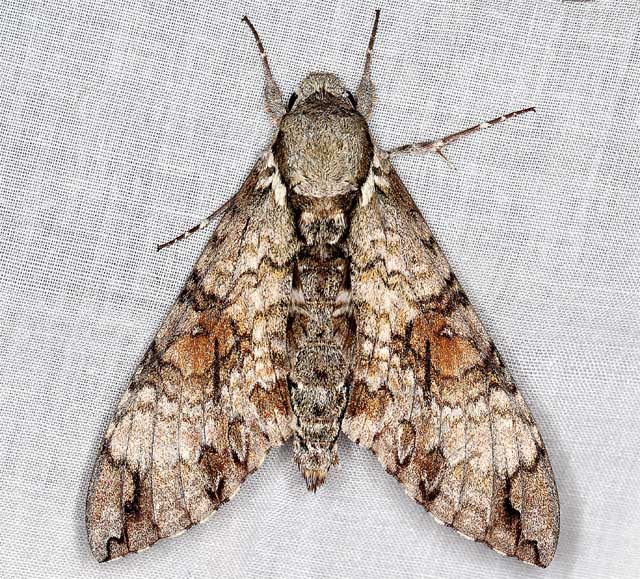
Manduca florestan, El Copan, Cartago, Costa Rica,
March 6, 2019, 1047m, courtesy of Gernot Kunz.
Visit Manduca florestan, Camp Caiman, near Kaw, French Guiana, April 29, 2011, courtesy of Andres Urbas.
Visit Manduca florestan, Radisson, Panama, Panama, April 20, 2015, Tony James.
Evan Rand writes, May 2010: "I've encountered enough fresh Manduca florestan in Gila and Navajo Cos, Arizona, in the past two years that I'm pretty sure they're breeding there, which is considerably farther north than most other information indicates."
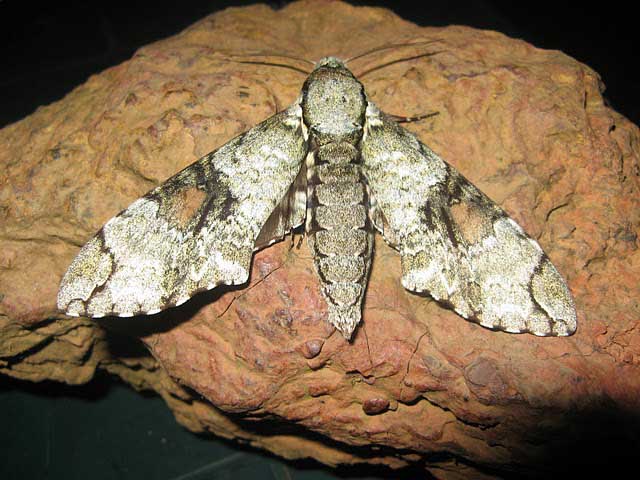
Manduca florestan, Camp Caiman, near Kaw, French Guiana,
April 29, 2011, courtesy of Andres Urbas.
The upperside of the forewing is gray to yellowish gray to brown, with whitish patches and black markings, including two dashes running from the cell out toward the margin.The reddish brown patch just outside the cell and above the dashes is the most distinguishing character.Structurally very similar to Manduca lichenea. Individual variation means identification is not always easy. Forewing with a greenish tint in fresh specimens, which can fade to clayish yellow; black discal streaks between veins M3 and CuA2 always very prominent against the pale ground colour, unlike in Manduca lichenea. CATE The upperside of the hindwing is dark brown with a brown-centered white bar at the hind edge. Ceratomia sonorensis, a similar species, is smaller and has dark streaks on the forewing. Image, copyright, courtesy of Steve Graser, Yasuni, Ecuador September 11, 2002 - 12:29 AM. |
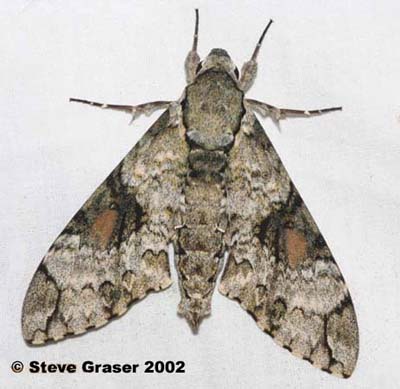 |
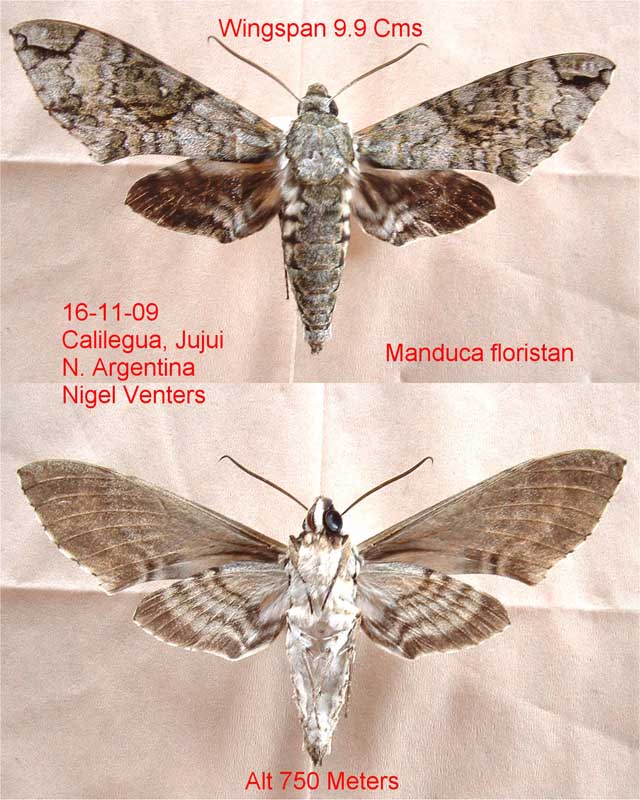
Manduca florestan, 99mm, Calilegua, Jujuy, Argentina,
November 16, 2009, 750m, courtesy of Nigel venters.
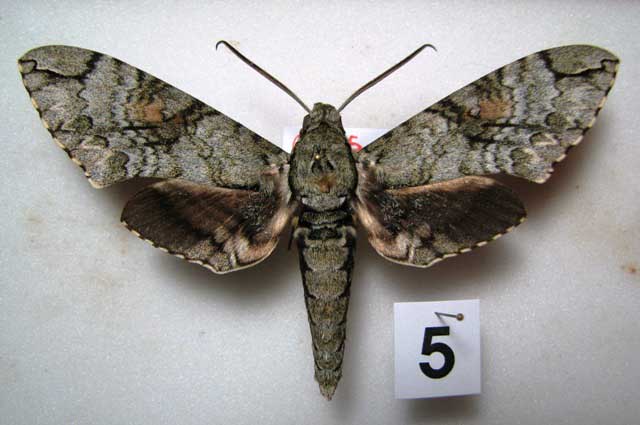
Manduca florestan, Cozumel, Quintana Roo, Mexico,
courtesy of Bedros Orchanian.
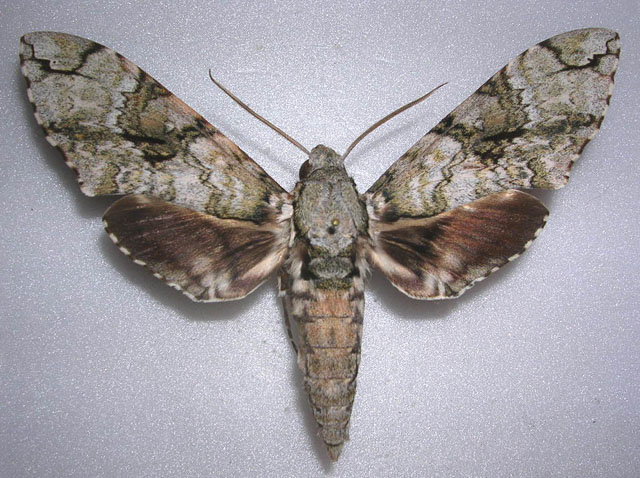
Manduca florestan, Brasil, Poté, Minas Gerais,
November 11,
2004, courtesy of Frederik Goussey,
id by Jean Haxaire.
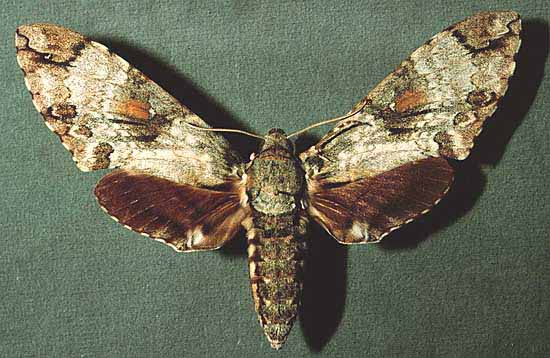
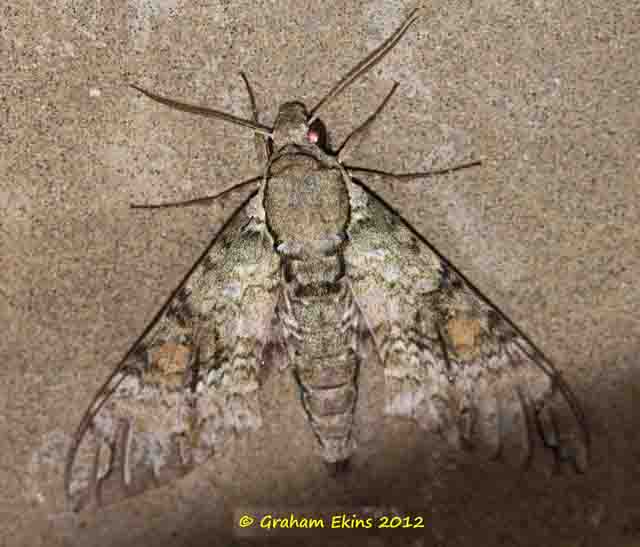
Manduca florestan, Chalalan Lodge, River Beni, PN Alto Madidi, La Paz, Bolivia,
August 2012, courtesy of Graham Ekins.
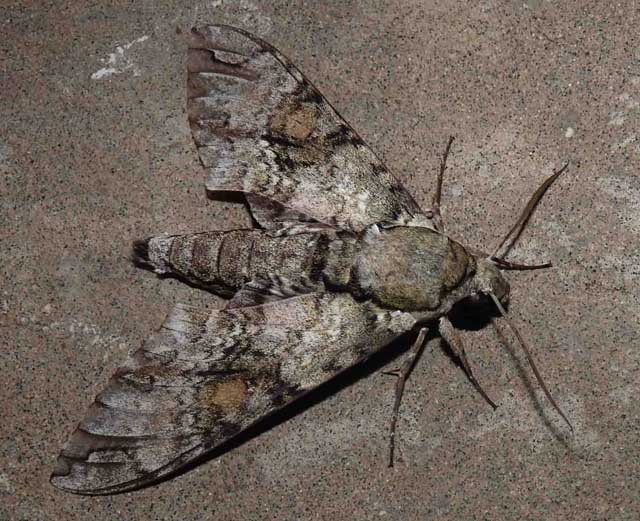
Manduca florestan, Chalalan Lodge, River Beni, PN Alto Madidi, La Paz, Bolivia,
August 2012, courtesy of Graham Ekins.
In Costa Rica, Dan Janzen reports the following hosts: Stachytarpheta frantzii, Callicarpa acuminata, Aegiphylla martinicensis and Citharexylum costaricensis of the Verbenaceae family, Tabebuia ochracea, Callichlamys latifolia, Cydista heterophylla, Cydista diversifolia, Crescentia alata, Macfadyena unguis-cati and a vine of the Bignoniaceae family and Cordia panamensis and Cordia alliodora of the Boraginaceae family and Chionentis panamensis of the Olacaceae family.
In Brazil, larvae have been reported on Lantana camara, Pyrostegia venusta and Vitex megapotamica. HOSTS
Translucent green eggs are deposited singly or in pairs and possibly in small groups.
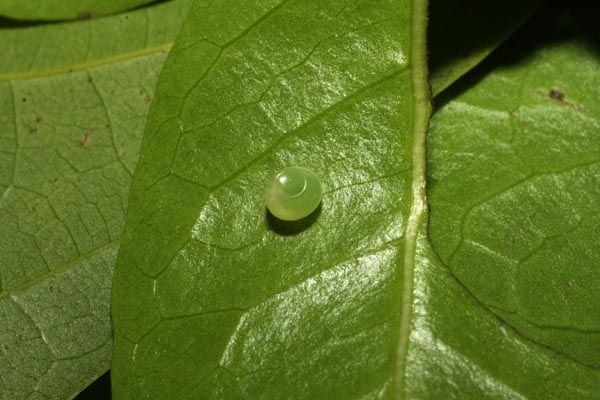
Manduca florestan egg, Costa Rica, courtesy of Dan Janzen.
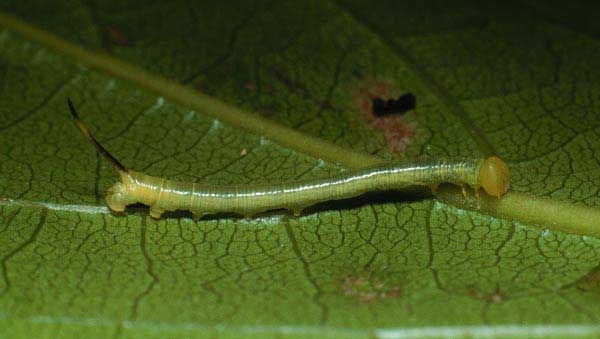
Manduca florestan first/second instar, Costa Rica, courtesy of Dan Janzen.
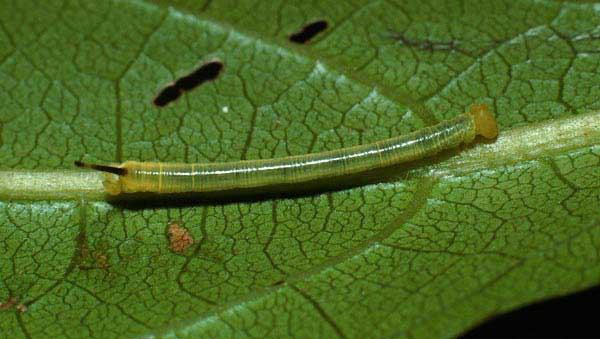
Manduca florestan first/second instar, Costa Rica, courtesy of Dan Janzen.
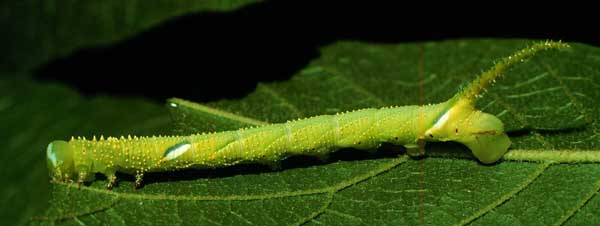
Manduca florestan third instar, Costa Rica, courtesy of Dan Janzen.
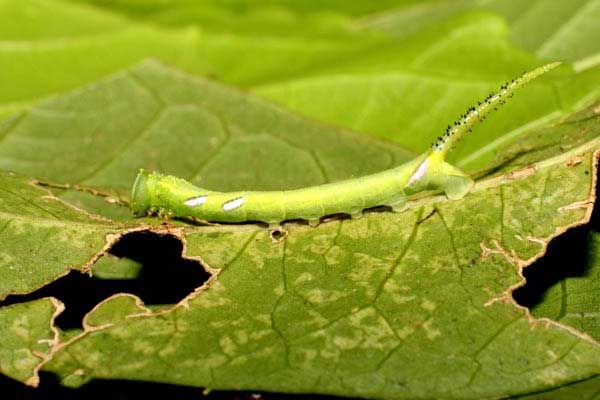
Manduca florestan third instar, Costa Rica, courtesy of Dan Janzen.
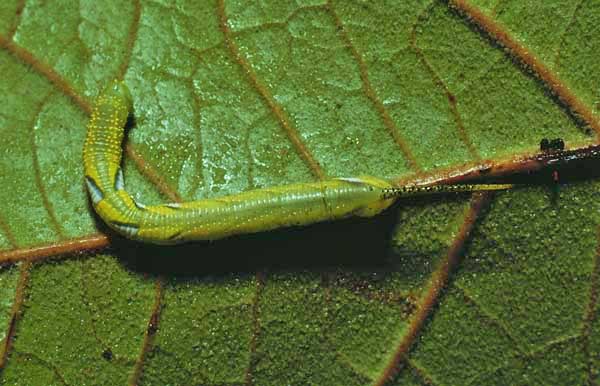
Manduca florestan third instar, Costa Rica, courtesy of Dan Janzen.
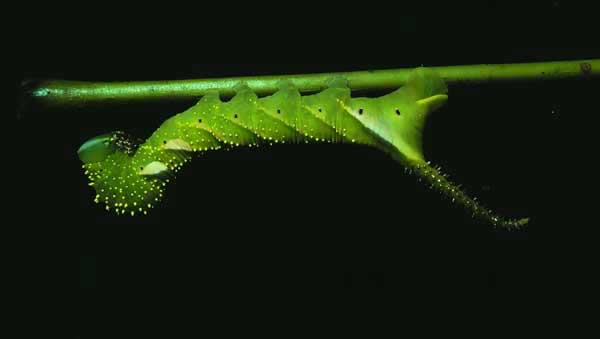
Manduca florestan fourth instar, Costa Rica, courtesy of Dan Janzen.
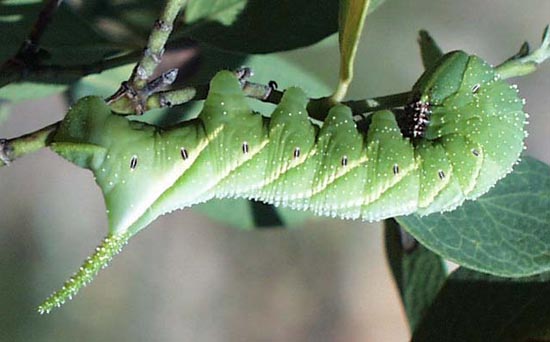
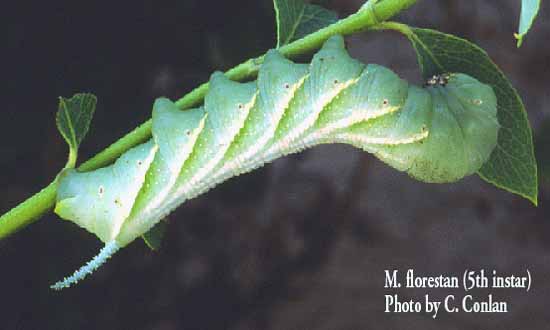
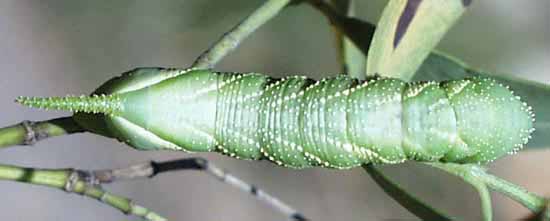
Larvae pupate on their backs in typical Manduca fashion. Moths emerge in about thirty to fifty days. |  |
Use your browser "Back" button to return to the previous page.
Return to Sphingidae Index
Return to Sphingini Tribe
Use your browser "Back" button to return to the previous page.
This page is brought to you by Bill Oehlke and the WLSS. Pages are on space rented from Bizland. If you would like to become a "Patron of the Sphingidae Site", contact Bill.
Please send sightings/images to Bill. I will do my best to respond to requests for identification help.
Enjoy one of nature's wonderments: Live Saturniidae (Giant Silkmoth) cocoons.
 Show appreciation for this site by clicking on flashing butterfly to the left. The link will take you to a page with links to many insect sites. |